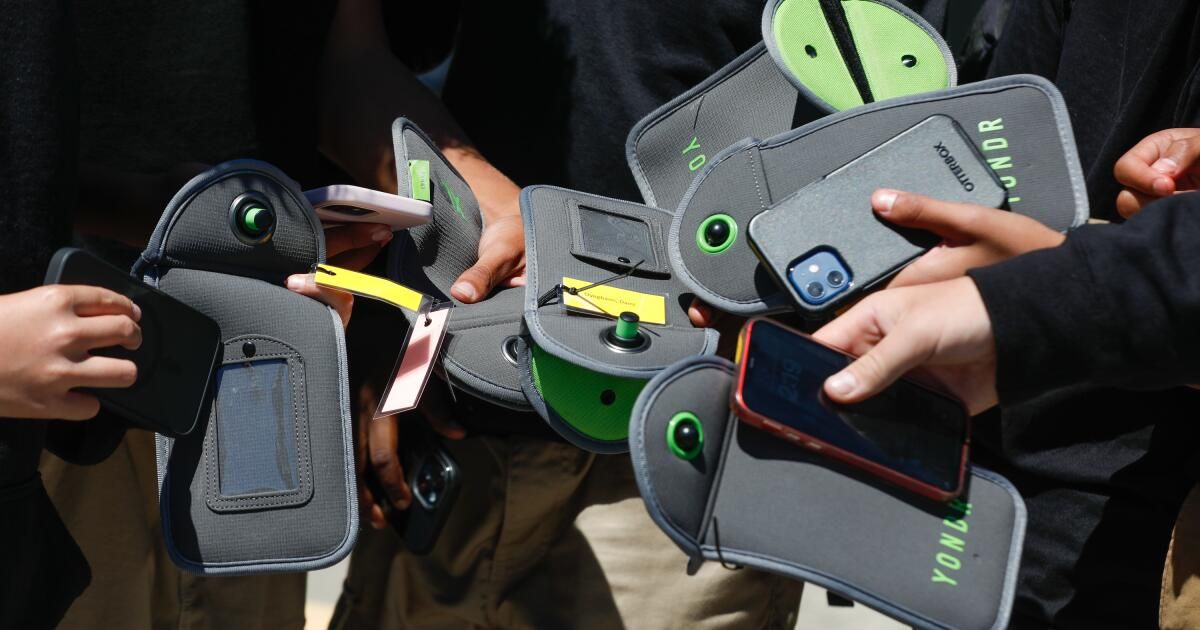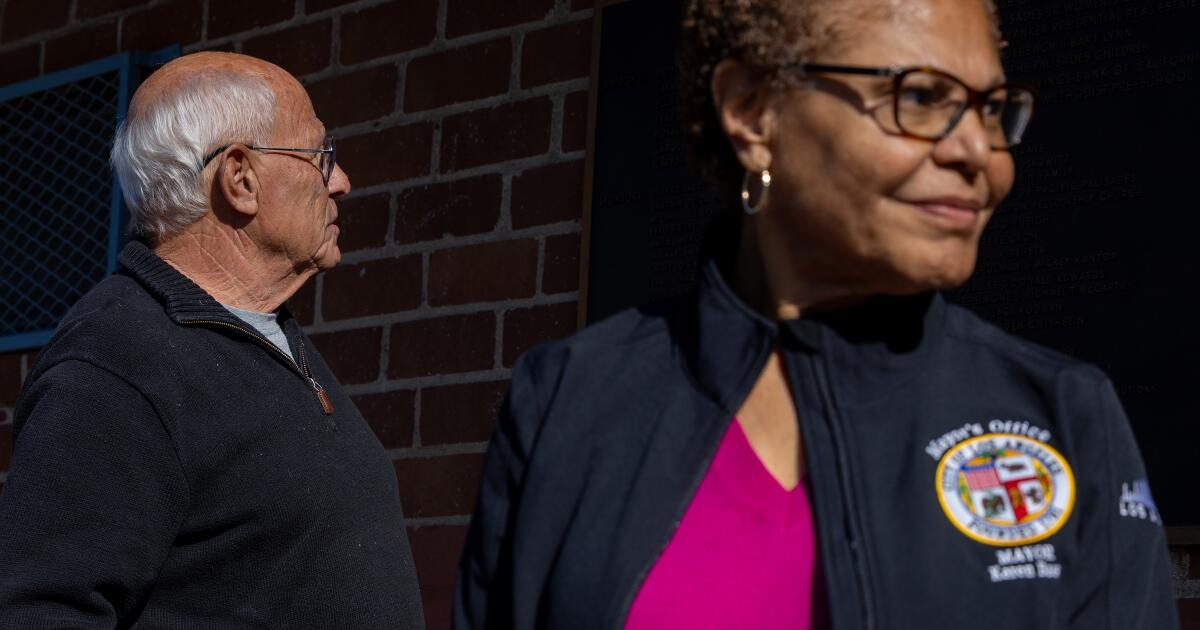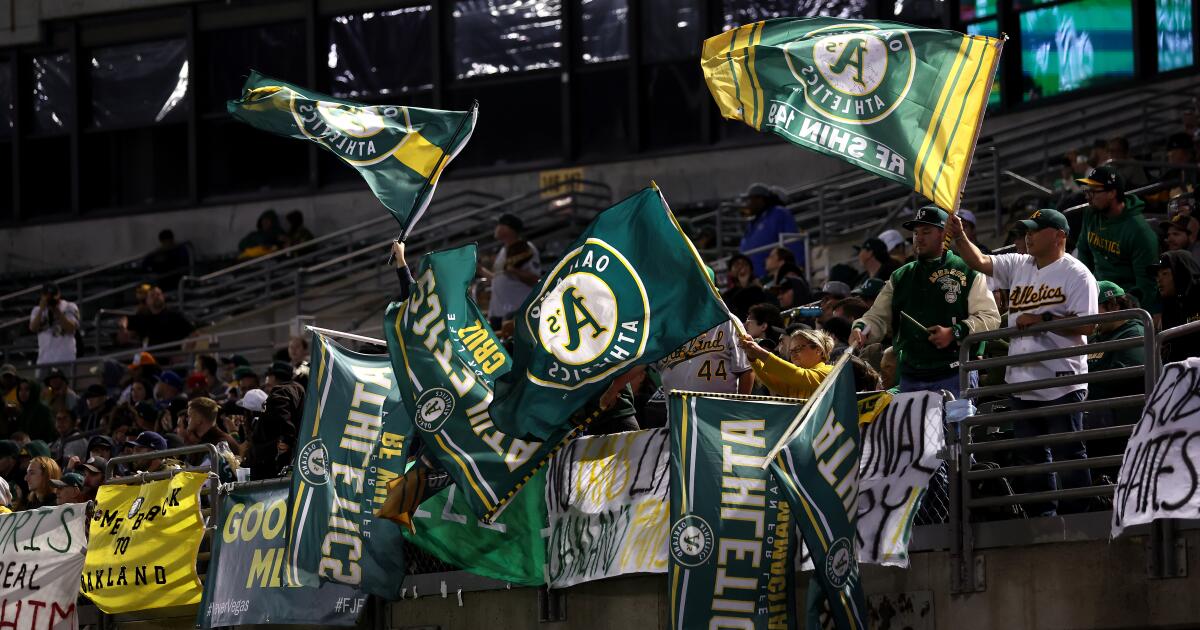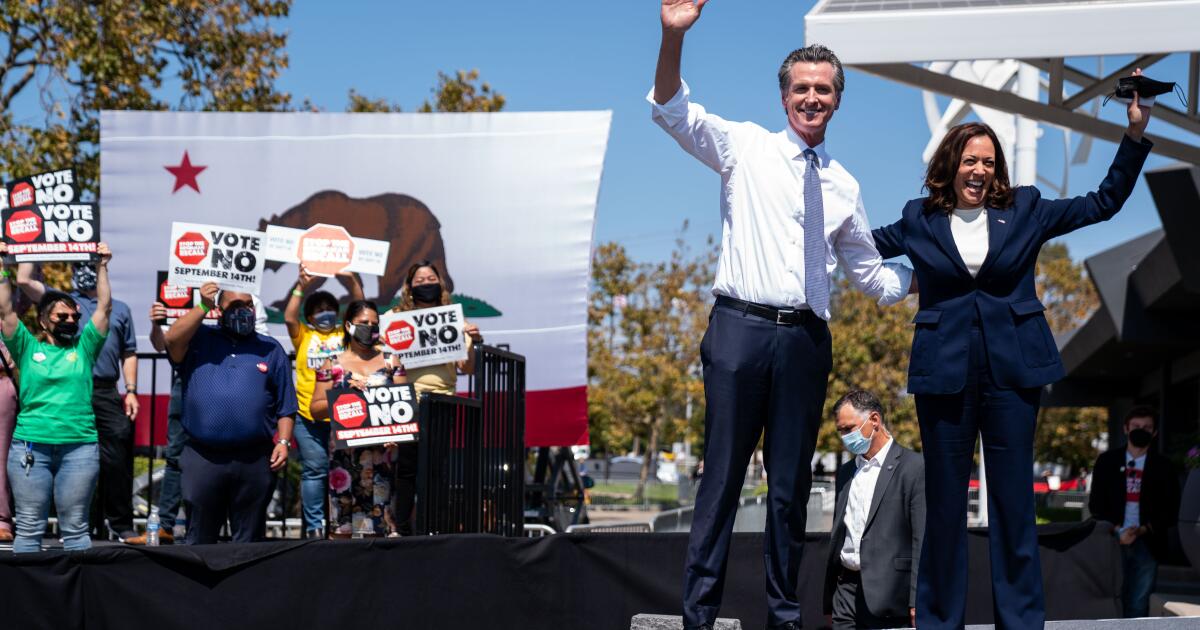At Dymally High School in South Los Angeles, test scores have improved slightly, fights have decreased and teachers are better able to focus on instruction, with Principal Darvina Bradley crediting a ban on cellphones on campus.
“What surprised me the most was that we had to start offering games and things to entertain them at lunchtime, because they really became kids again,” Bradley said. “We heard conversations again, lunchtime was no longer quiet, it became a real playground with real activity.”
This scene is one that California lawmakers hope to replicate with their approval of cellphone restrictions in state schools on Wednesday..
The Phone-Free Schools Act, a bipartisan bill introduced by Assemblyman Josh Hoover (R-Folsom), passed easily in the Legislature and requires all public schools to develop a policy by July 1, 2026, to limit or ban smartphones during the school day. It would force distracted, smartphone-obsessed students to do something many have been unwilling to do on their own: put their phones away in class.
The legislation is expected to be signed by Gov. Gavin Newsom, who urged educators to implement restrictions as the academic year begins, citing the “mental, academic and social risks” of phone use in classrooms. California would be the fifth state to require school districts to limit student phone use, joining Indiana, Minnesota, Ohio and Virginia.
A last-minute amendment to the bill allows schools to use “enforcement mechanisms” to limit access to smartphones, such as classroom lockers and individual bags with locks. The bill also includes some exceptions: Schools cannot prohibit students from using phones for individualized instruction, medical necessity and in emergencies. A teacher or administrator can also grant permission.
“We are operating under the assumption that schools will be reasonable and responsive to parents’ legitimate concerns about being able to reach their children after an emergency,” said Sen. Ben Allen (D-Santa Monica), a co-author of the bill. The proposed law does not include specifics on what constitutes an emergency, so it is up to schools to decide.
Los Angeles Unified is moving to enact an all-day ban in January, and rule-writing is already underway.
A handful of Los Angeles schools have already enacted bans and restrictions, but they are finding it difficult to enforce them. Their experiences — the benefits, the difficulty of enforcement and how students find ways to circumvent the rules — offer a window into the future.
Dymally High School
Bradley didn’t sugarcoat how difficult it was to enact the ban in January 2020 and again when classes resumed after pandemic closures at Mervyn M. Dymally Middle School. During community meetings, the principal said, she tried to explain to parents and students why the ban was necessary: to combat classroom distractions and curb the “terrible” situation with fights on campus that were organized largely via cellphones.
The school spent about $12,000 on 750 Yondr magnetic cases. Students place their phone in the case and close it under supervision when they enter campus. The case opens with a special magnet when they leave at the end of the day. School policy states that if a student is caught with a phone, parents have a 30-minute window to pick it up after school.
For parents who told their children not to follow the rules, Bradley said she was blunt:
“Would you rather we make sure your child is safe and take care of him and do everything we can for him?” Bradley asked. “Your child may do the right thing, but another child may not do it, and they may call a bunch of people to take care of him. What would you prefer?”
Generally, he said, they would prefer a ban on mobile phones.
For students, the approach was different. Tenth and 11th grade teacher Maria David said students need to understand the consequences of breaking the rule.
“Either you pass the class or you use your phone and you don’t pass the class,” David said. “They complain… but whether they like it or not, if the administration is really strict about implementing the Yondr bag, they can’t do anything about it.”
Instead of requiring professors to enforce the policy, instructors can call the office if a student uses a phone and a campus assistant will confiscate it.
“I don’t want to fight with a student, do I? It’s difficult. It would ruin your class,” David said.
However, if teachers, administrators or staff do not enforce restrictions consistently, progress can quickly evaporate, David added.
Dominique Street, a restorative justice teacher, said that while most students follow the rules, some have found ways to get around them, such as opening bags and replacing their phones with cardboard cutouts. David and former Dymally teacher Ryan Quinn said students have brought multiple phones to school or bought their own magnet to unlock the bag, with some even charging other students to use it.
While Yondr CEO Graham Dugoni said the company is continually improving the “durability” of its bags, he noted that schools will inevitably “have issues with student compliance” in the absence of strict enforcement.
Despite the challenges, Bradley said Dymally was happy to “be at the head of the pack” and added that nearby schools have followed suit.
Dorsey Senior High School
Susan Miller Dorsey Middle School Principal Orlando Johnson brought the issue to a vote during the 2022-23 school year. Parents were “overwhelmingly in favor” of banning cellphones. The student council disagreed. Their compromise? Phone lockers in classrooms.
Students are allowed to bring their phones to school, but they must lock them in a clear compartment once they enter the classroom and keep the key until the end of class. This way, Johnson said, students still have access to their phone in their “free time” (feeding, lunch and break periods), but they aren’t distracted in class.
“We wanted to reiterate to the students that we don’t want their cell phones,” Johnson said. “We’re trying to prepare kids to be adults… so it’s important to teach them how to manage their cell phone use.”
Students attend classes at Dorsey High School in April 2023.
(Irfan Khan/Los Angeles Times)
Trinidad Menchú, a senior at Dorsey last year, recalled an assembly where the school explained how and why lockers would be used in classrooms. But she said it was rare for 12th-grade teachers to use lockers, choosing instead to give their students the “freedom” to make the decision for themselves. In those classes, phones were still a major distraction, she said.
But economics and government class was different. When Menchu walked into the classroom, teacher and football coach Irvin Davis was adamant about locking away cellphones, explaining that he wanted them to get the most out of their education. And they obliged.
“There wasn’t a single phone in the room,” Menchu said. “Everyone respected that teacher… because he teaches with such honesty. You can tell when a teacher wants the best for his students.”
Davis said that once students get used to the routine of putting their phones away during class time, “it’s actually not that hard.” The caveat? Teachers have to combine the policy with culturally relevant lessons that engage students and keep their attention.
Johnson, the principal, agreed that while every classroom has a locker, enforcement of the ban varies from teacher to teacher. If they decide to enforce it, they won't have to do it alone.
Though still a work in progress, Johnson and Menchu agree that classrooms using the lockers have seen much higher student engagement — the first step in the school’s mission to increase test scores and the number of students who qualify for college.
Academic Leadership Academy for Girls
The Girls Academic Leadership Academy in Mid-City, the only all-girls public school in the district, enacted a cellphone ban when the campus opened in 2016. The school, which serves students in grades six through 12, requires students to keep their phones off and in their backpacks all day, a rule that has become ingrained in school culture.
Director Liz Ackerman-Hicks said the ban was especially important for teenage girls.
“We looked at a lot of the early research and saw, particularly in girls… the level of depression and anxiety, and how being on social media in particular could lead to low self-esteem,” Ackerman-Hicks said.
A 2022 Pew Research study on teen social media use found that girls between the ages of 15 and 17 are the most likely to be cyberbullied. This year, Ackerman-Hicks said they expanded the policy to ban phone use on campus before and after school in an attempt to combat this.
Ackerman-Hicks said students have even gone a step further. In the wake of the pandemic, the student council implemented its own screen-free lunches to combat reliance on Chromebooks.
While the policy isn’t perfect — parents still try to reach their kids in the middle of class — several students said they rarely see other people with their phones. They typically only use them for educational purposes, such as taking pictures of class slides, filming soap operas for Spanish class and checking their weight-lifting form in P.E.
GALA is still trying to figure out how best to handle phone use during emergencies.
“It’s scary to lock and close your doors,” Ackerman-Hicks said. But “in an emergency, things happen so fast that taking the time to send a text or having the blue light on your phone is not going to help… you may have missed very important instructions.”
Sadie Hoodenpyle, a 12th-grader who has been through three campus closures, said the idea that students shouldn’t be able to use their phones in an emergency is “a little bit out of place.” Her first instinct, she said, is to text her sister Piper, who also attends GALA, and make sure she’s OK. She then lets her parents know she’s OK — a convenience her mother, Skye Peyton, described as a double-edged sword.
“I felt like I could give them some support and make them feel better in a bad situation, just by being there and being able to listen to their concerns,” Peyton said. “But for me personally, it was very stressful… There’s nothing I can do except worry.”
As decisions become known at the district and state levels, each school will have to decide what is best for its students.












